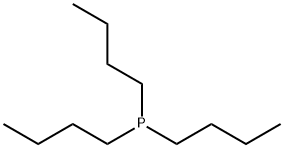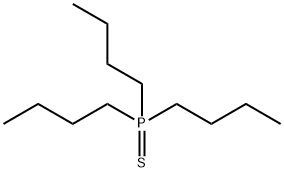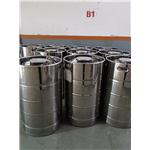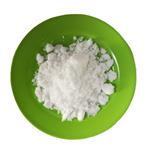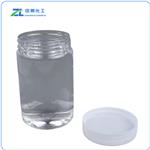Chemical Properties
Clear liquid
Uses
1,4-addition catalyst; used with disulfides for the thioetherification of alcohols; acylation catalyst; used to prepare active esters.
Uses
Tributylphosphine is usually used as catalyst for Domino reactions of activated conjugated dienes with β,γ-unsaturated-α-ketoesters, [3+2]-Cycloadditions,Umpolung addition reactions,Reductive carbonylation, Allylation reactions.
Reactions
Tributylphosphine (TBP) is a versatile chemical reagent similar to tributylamine but more reactive, showing catalytic activity in a variety of reactions.
(1) TBP reacts with oxygen to form the corresponding phosphine oxide (i.e., tributylphosphine oxide) according to the following reaction equation:

Since this reaction is very fast, the compound is usually handled under an inert atmosphere. Phosphine is also easily alkylated.
(2) TBP is used as an anionic polymerization initiator in the reaction of aldehydes, olefins, or active vinyl compounds. Condensation reactions are usually catalyzed by TBP. In some cases, TBP can induce condensation reactions that are not catalyzed by the corresponding amine. TBP catalysis has been used for isocyanates, active vinyl compounds, and epoxy esters
[1].
General Description
Tributylphosphane is a colorless to yellowish liquid with a strong garlic-like odor. Tributylphosphane is insoluble in water. Tributylphosphane is liable to heat and ignite spontaneously in air. If involved in a fire phosphine gas, a highly flammable and toxic gas, will evolve. Tributylphosphane is irritating to mucous membranes.
Air & Water Reactions
Highly flammable. May ignite on contact with air or moist air. Insoluble in water.
Reactivity Profile
Organophosphates, such as Tributylphosphane, are susceptible to formation of highly toxic and flammable phosphine gas in the presence of strong reducing agents such as hydrides. Partial oxidation by oxidizing agents may result in the release of toxic phosphorus oxides.
Health Hazard
Fire will produce irritating, corrosive and/or toxic gases. Inhalation of decomposition products may cause severe injury or death. Contact with substance may cause severe burns to skin and eyes. Runoff from fire control may cause pollution.
Fire Hazard
Flammable/combustible material. May ignite on contact with moist air or moisture. May burn rapidly with flare-burning effect. Some react vigorously or explosively on contact with water. Some may decompose explosively when heated or involved in a fire. May re-ignite after fire is extinguished. Runoff may create fire or explosion hazard. Containers may explode when heated.
Purification Methods
Fractionally distil it under reduced pressure in an inert atmosphere (N2) through an 8inch gauze-packed column (b 110-111o/10mm) and redistil it in a vacuum, then seal it in thin glass ampoules. It is easily oxidised by air to tri-n-butylphosphine oxide, b 293-296o/745mm. It has a characteristic odour, it is soluble in EtOH, Et2O, and *C6H6 but is insoluble in H2O and less easily oxidised by air than the lower molecular weight phosphines. It forms complexes, e.g. with CS2 (1:1) m 65.5o (from EtOH). [Davies & Jones J Chem Soc 33 1929, Chernick & Skinner J Chem Soc 1401 1956, Beilstein 4 IV 3436.]
References
[1] CATALYZE with TRIBUTYLPHOSPHINE[J]. C&EN Global Enterprise, 1967, 45 3: 11. DOI:10.1021/cen-v045n003.p011.
